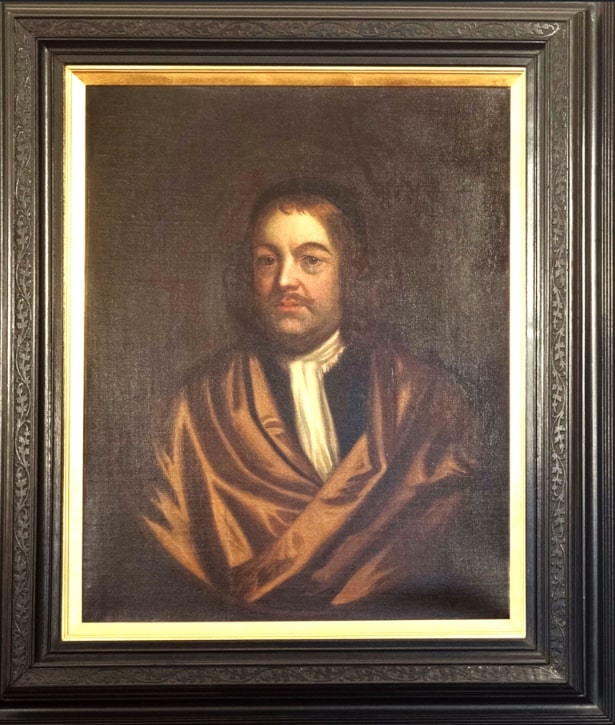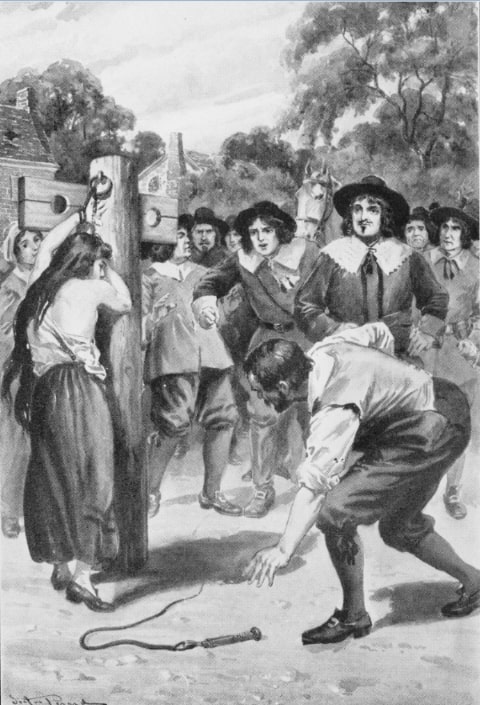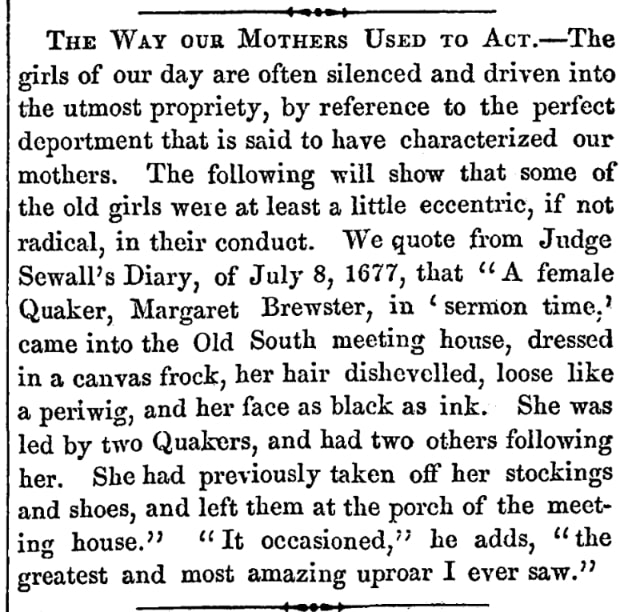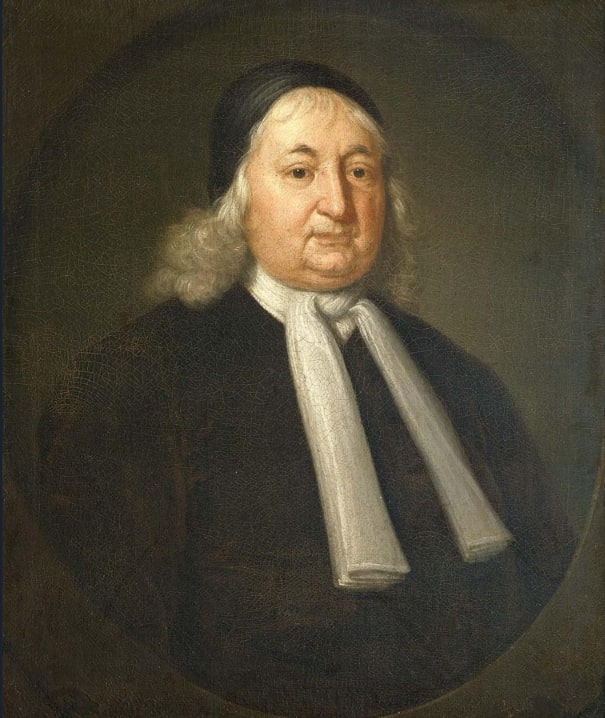Introduction: In this article, Melissa Davenport Berry writes about another brave Quaker woman who defied Puritan officials in Massachusetts Bay Colony in the 1600s: Margaret Brewster. Melissa is a genealogist who has a website, americana-archives.com, and a Facebook group, New England Family Genealogy and History.
Today I conclude my series on three brave 17th century Quaker women, ending with the story of Margaret Brewster – who was among the many dames who protested the orthodox Puritan church in Massachusetts Bay Colony in the 1600s.
To recap: My previous stories covered Lydia (Perkins) Wardwell and Deborah (Buffum) Wilson, two Quaker women who defied the Puritan authorities by appearing naked to protest the persecutions inflicted on the Quakers. (Read about their stories in the links at the end of this article.)

In The Quaker Invasion of Massachusetts, Richard P. Hallowell asserts that Margaret Brewster pulled a shocking protest, but “was abundantly clothed” and “prehended for the performance of an act which, however peculiar or fanatical it may be considered, was refined and dignified as compared with the brutal indecency of the Court when she was on trial.”
Here are a few accounts of Margaret from GenealogyBank’s Historical Newspaper Archives.
A Quaker Prophetess’ Crime and Punishment
An article published in the Times-Picayune gave the history of the whipping post in Boston and provided some details on Margaret. She, like many other Quakers, was among the unfortunate to endure the whipping post.

This article reports:
On the 8th of July, 1677, Margaret Brewster brought upon herself the wrath of the town, which culminated in a sentence to be whipped on the following 4th of August. It appears that early in the year Margaret, with the consent of her husband [Thomas], came here from Barbados, and on her arrival warned the people of a grievous calamity which was shortly to come upon them called the black-pox. Which, indeed, soon after was very mortal in the town, by which 800 people were carried off.
The service of warning the town Margaret preformed in a very singular manner, she taking with her Lydia Wright of Long Island, Sarah Miles of Black Point, Elizabeth Bowers Jr., and John Easton Jr., took [off] her riding clothes and shoes and went into the South Church in time of meeting, in sackcloth, with ashes upon her head, barefoot and with her face blackened. With her attendants she was arrested and hurried off to prison.
[Simon] Bradstreet, in his warrant for their arrest, alleges their offense “making a horrible disturbance on the Lord’s Day, and affrighting the people in the South Church in Boston, in the time of the public dispensing of the word, whereby several women, as I am informed, are in great danger of miscarrying.”
When Margaret was brought before the court for examination the constable was unable to identify her, “for,” he said, “she was then in the shape of the devil”; but she, with the desire, probably, of aiding the court as much as possible, owned to being that individual, and the case went on. She was adjudged guilty and sentenced to be “whipped at a cart’s tail,” up and down the town, with twenty lashes.

According to sources, Maragret received her punishment – not tied to the tail end of a cart – but at the whipping post, or pillory.

Margaret in Samuel Sewall’s Diary
Judge Samuel Sewall (1652–1730) was a noted diarist and the only repenting judge in the Salem witch trials of 1692. One entry in Samuel Sewall’s Diary commented on Margaret’s appearance in Boston’s South Church.

Sewall writes:
“A female Quaker, Margaret Brewster, in ‘sermon time,’ came into the Old South meeting house, dressed in a canvas frock, her hair disheveled, loose like a periwig, and her face as black as ink. She was led by two Quakers, and had two others following her. She had previously taken off her stockings and shoes, and left them at the porch of the meeting house. It occasioned,” he adds, “the greatest and most amazing uproar I ever saw.”

Margaret Brewster & John Greenleaf Whittier
Margaret is also present in Leaves from Margaret Smith’s Journal in the Province of Massachusetts Bay 1678-9, written by Quaker author John Greenleaf Whittier and first published in book form in 1849.
Whittier created Smith, a fictitious diarist who pens historical accounts of the severe prejudices and harsh treatment the Puritans inflicted upon Quakers.

Whittier weaves in Margaret, described by a Puritan lady as “sadly led astray by Quakers,” and “with all her meek looks and kind words she was full of all manner of pestilent heresies and did remind her always of Satin in the shape of an angel.”
A great resource to consult regarding Margaret was published by George Fox, a founder of the Quakers, responding to a letter Gov. John Leveret of Boston sent to Gov. William Coddington of Rhode-Island, dated 1677. You can read it here: University of Michigan Library Digital Collections.
Explore over 330 years of newspapers and historical records in GenealogyBank. Discover your family story! Start a 7-Day Free Trial
Note on the header image: “Cassandra Southwick in court before the magistrates,” from the Boston Globe, 23 October 1923.
Related Articles:
- 17th Century Quaker Women Gone Wild (part 1)
- 17th Century Quaker Women Gone Wild (part 2)
- 17th Century Quaker Women Gone Wild (part 3)
- 17th Century Quaker Women Gone Wild (part 4)
- Nathaniel Sylvester, ‘Lord of Shelter’ for 17th Century Quakers
- A Monument for Persecuted Quakers Upsets Salem, MA
- Persecuted Quakers in Colonial America
- Persecuted Quakers in Colonial America, Part II
- Persecuted Quakers in Colonial America, Part III
- The Coming of the Quakers, Part I
- The Coming of the Quakers, Part II
- Early Quaker Meetings Raided by Salem Authorities
- Rare Quaker Bible from Early Colonial Days
